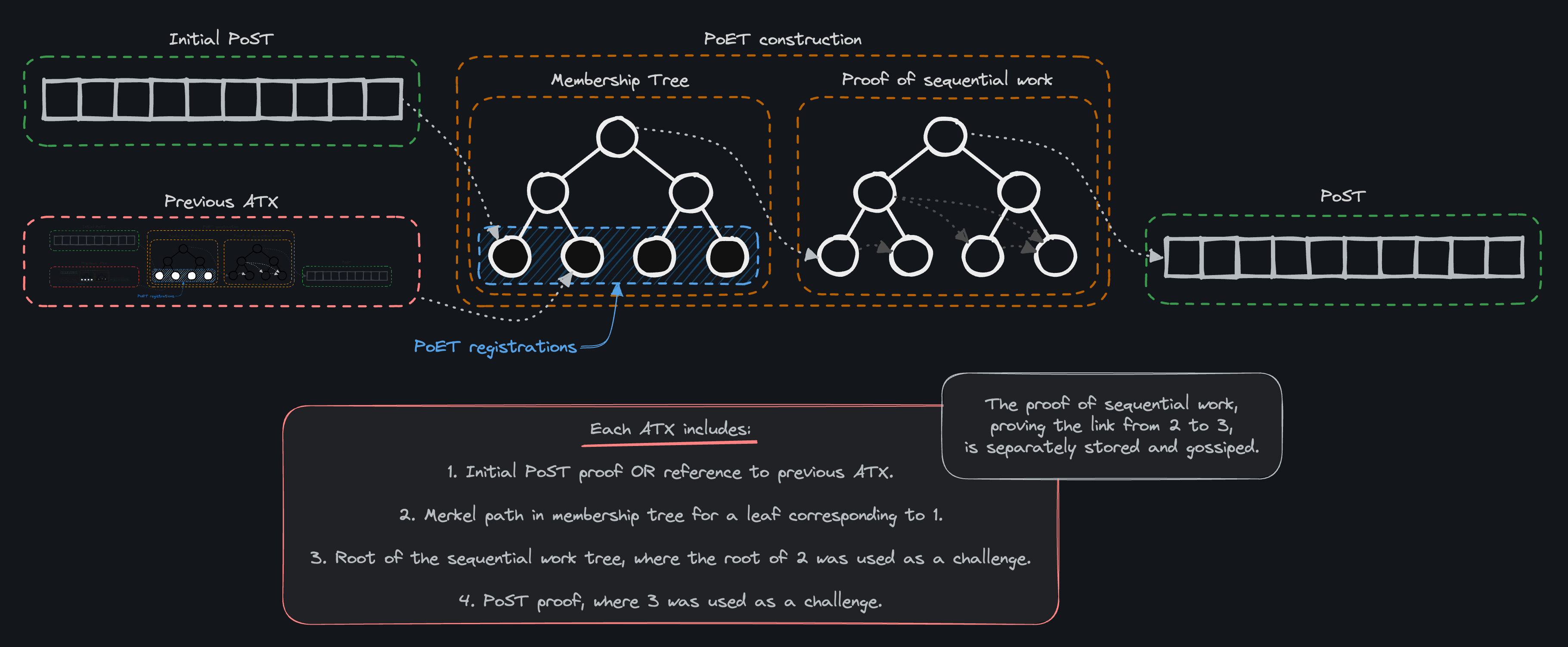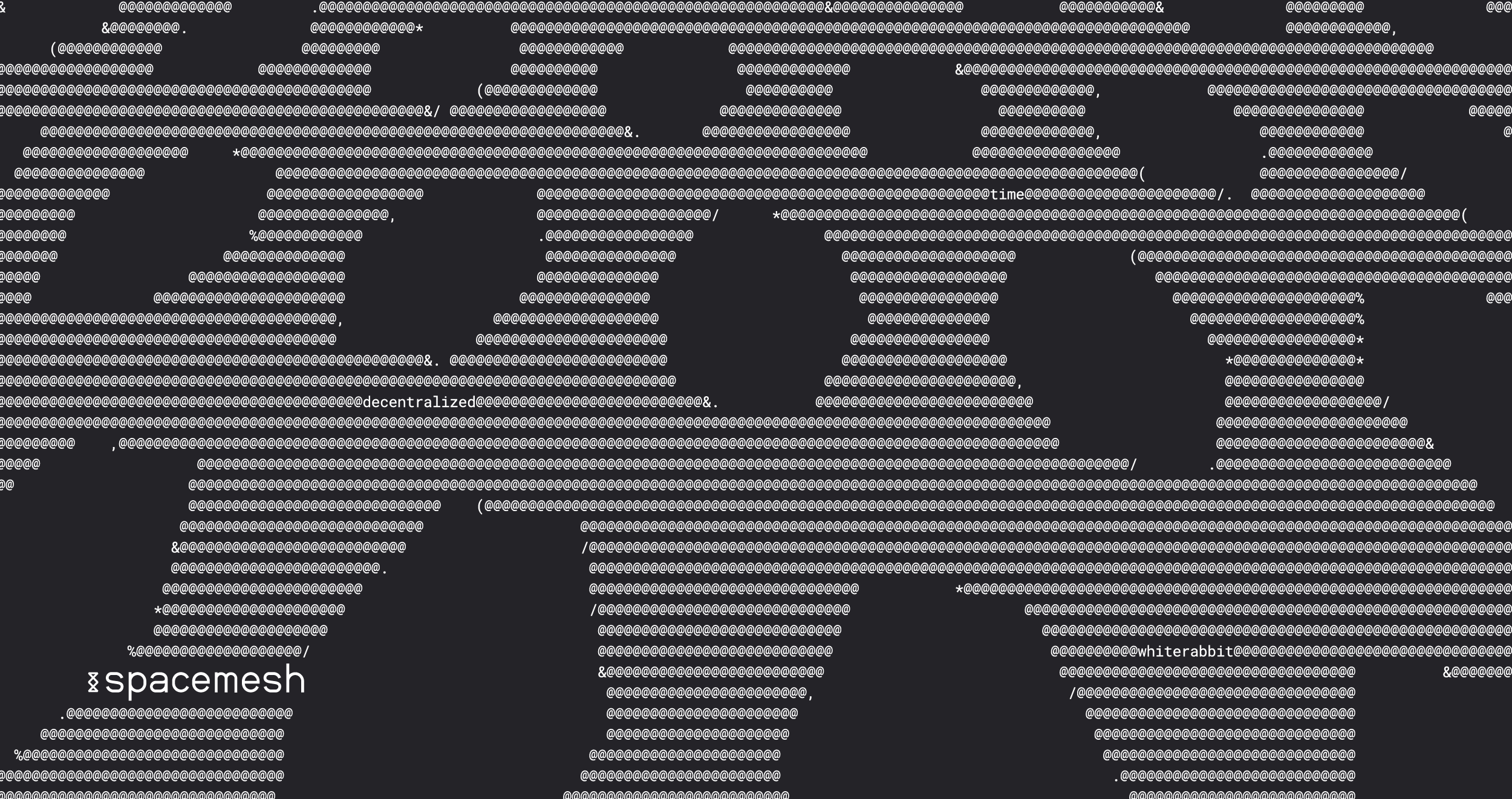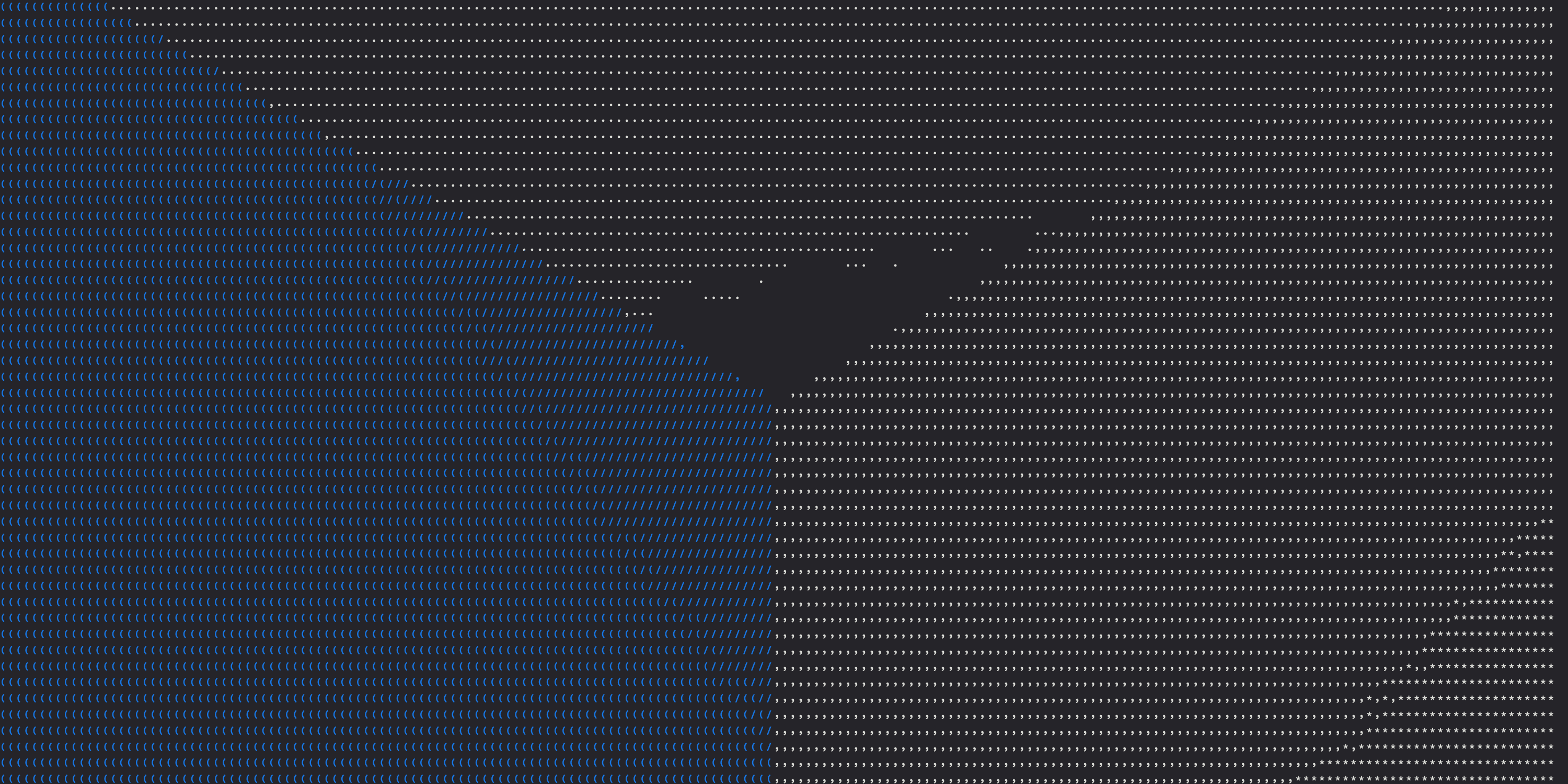Background: Proof of Space-Time
The mechanism protecting Spacemesh from attackers taking over the network is based on smeshers allocating space over a period of time. To be eligible for participation, and the rewards that come with it, one must prove that they’ve indeed held a claimed amount of storage over a period of time.
Spacemesh smeshers must publish an Activation Transaction once per two-week epoch to certify that they’re eligible to participate in the following epoch. The activation transaction contains cryptographic proof that the author had access to the allocated storage before and after a proven time span.
When a smesher completes the initialization of their allocated storage, they produce an Initial PoST (Proof of Space). This only proves that the author had access to the PoST data at an undetermined point in time, but this proof is then timestamped by the PoET (Proof of Elapsed Time).
The PoET construction has two main parts: a membership tree, showing that a given smesher had access to their PoST data prior to the PoET work and a Proof of Sequential Work, showing that a certain amount of sequential work has been performed - which Spacemesh uses as an approximation of time.
Once the proof of sequential work is complete, smeshers can use it as a challenge for another PoST - resulting in a chain that proves that the smesher had access to the data both before and after the sequential work.
The following simplified diagram illustrates the structure of an ATX:

The Smeshing Loop
To prevent the need to generate, transmit and store two PoST proofs for every ATX, in all PoET registrations but the first smeshers include a reference to their previous ATX. Since the previous ATX includes a PoST and is included in the PoET membership tree, the smesher proves this way that they had access to the stored data before PoET work began.
To allow smeshers enough time to receive the PoET, generate a PoST (this step may take several hours), generate an ATX with both proofs and use it to register to the next PoET round - PoET rounds are spaced out. There is a 12-hour Cycle Gap between PoET rounds, which should be enough time for most smeshers to complete this process. To prevent smeshers from allocating more storage than they can create a PoST for in 12 hours, SMApp runs a benchmark and tells users what their maximum recommended allocation is as part of the smeshing setup process.

The Bottom Line: What’s Needed to Earn Rewards
Spacemesh rewards (made up of transaction fees + block subsidy) are distributed to smeshers who produce eligible block proposals in time for the Hare to include them in the final set used to generate a block. They’re allocated based on the relative weight of each proposal, which is derived from the weight of the smesher’s ATX that was published prior to the current epoch.
An eligible ATX includes two PoST proofs (or a reference to the previous ATX and a single PoST proof) tied together by a PoET proof, together proving that the smesher had access to the data before and after a certain amount of time (two weeks) passed.
The following graphic details all the required steps from initialization to receiving a reward:

Join our newsletter to stay up to date on features and releases



